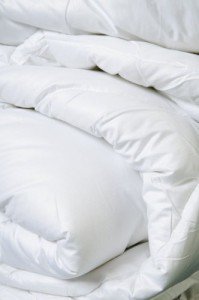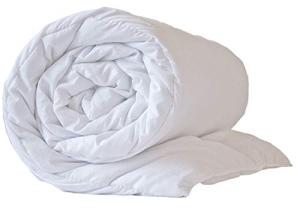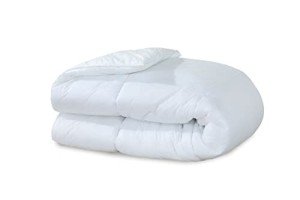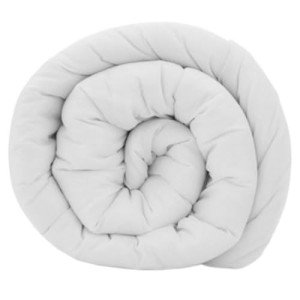As the warmth of summer approaches, many people find themselves searching for bedding that offers a comfortable night’s sleep without overheating. Enter the lightweight, cool summer nights duvet, typically rated at 4 to 5 tog. This guide explores the features, benefits, and types of these duvets, helping you make an informed decision when choosing the perfect summer bedding.
Understanding Tog Ratings
Tog ratings serve as a measurement of thermal insulation for duvets. The higher the tog rating, the warmer the duvet. In contrast, a duvet rated between 4 and 5 tog is ideal for warmer climates, offering a balance between comfort and breathability. Here’s a breakdown of what the tog ratings typically mean:
| Tog Rating | Temperature Range | Ideal for |
|---|---|---|
| 1-2 Tog | Below 15°C | Summer cooling |
| 3-4 Tog | 15°C - 18°C | Mild seasons |
| 4-5 Tog | 18°C - 20°C | Warm nights |
| 6-7 Tog | 20°C - 25°C | Winter warmth |
Why Choose a 4-5 Tog Duvet?
A 4-5 tog duvet provides several advantages, particularly during the hot and humid summer months:
-
Breathability: The lightweight materials used in these duvets allow for better air circulation, helping to regulate body temperature.
-
Comfort: With less bulk than heavier options, summer duvets are easier to manage, promoting a more restful sleep.
-
Versatility: Many 4-5 tog duvets come in designs that can be layered with heavier options for cooler nights, allowing for easy adjustments based on temperature changes.
-
Easy Care: Lightweight duvets are often machine washable and quick to dry, making them an ideal choice for the summer months.
Types of Lightweight Summer Duvets
When choosing a duvet, it’s important to consider the materials and fill types available. Here are some common types of lightweight duvets:
1. Natural Fill Duvets
- Duck or Goose Down: These provide excellent insulation and lightness. Down duvets typically offer great breathability.
- Wool: A natural insulator that helps wick moisture away, keeping you cool even in humid conditions.
2. Synthetic Fill Duvets
- Microfiber: Soft and lightweight, these duvets mimic the insulating properties of down while remaining hypoallergenic.
- Hollowfibre: Affordable and easy to care for, hollowfibre duvets are durable and offer a good balance of warmth and breathability.
3. Bamboo Duvets
- Bamboo-filled duvets are eco-friendly, hypoallergenic, and have moisture-wicking properties that contribute to a cooler sleep environment.
Table of Comparison
Here’s a comparison table summarizing the types of lightweight summer duvets available, along with their main characteristics:
| Duvet Type | Fill Material | Advantages | Disadvantages |
|---|---|---|---|
| Natural Down | Duck/Goose Down | Lightweight, excellent insulation | Expensive, requires delicate care |
| Wool | Wool | Naturally breathable, moisture-wicking | Heavier than synthetic options |
| Microfiber | Synthetic Fiber | Soft, hypoallergenic, easy care | Less breathable than natural fill |
| Hollowfibre | Synthetic Fiber | Affordable, durable, easy care | May feel less luxurious |
| Bamboo | Bamboo Fiber | Eco-friendly, hypoallergenic | Less common, may be pricier |
Care and Maintenance
To extend the life of a 4-5 tog duvet, proper care is crucial. Here are some maintenance tips:
-
Washing: Follow the care instructions on the label. Most lightweight duvets are machine washable; choose a gentle cycle with cold water.
-
Drying: Avoid high heat when drying. Instead, use a low setting and consider adding dryer balls to help fluff the duvet.
-
Storage: Store the duvet in a breathable storage bag or cotton cover during the off-season to prevent moisture build-up and mildew.
-
Regular airing: Air out the duvet on sunny days to keep it fresh and remove any trapped moisture.
FAQs
1. What tog rating should I choose for summer?
A tog rating of 4-5 is recommended for warm summer nights.
2. Can I use a summer duvet in winter?
While a summer duvet may not be warm enough for winter, you can layer it with a heavier duvet or blanket for extra warmth.
3. How do I determine if a duvet is breathable?
Look for materials like down, cotton, or bamboo, and check for moisture-wicking properties.
4. Do lightweight duvets provide good warmth?
Yes, a well-made lightweight duvet can provide adequate warmth without making you feel overheated.
5. Are synthetic or natural fill duvets better?
It depends on your preference. Natural fill duvets tend to be more breathable but can be pricier; synthetic options are often more affordable and easier to maintain.
Choosing the right duvet for summer sleep can make all the difference in comfort and restfulness. A lightweight cool summer nights duvet with a tog rating of 4-5 is an excellent choice for those looking to avoid overheating during warmer months. By understanding the different types of fillings available and proper care techniques, individuals can enjoy a refreshing and restful sleep throughout the summer.







